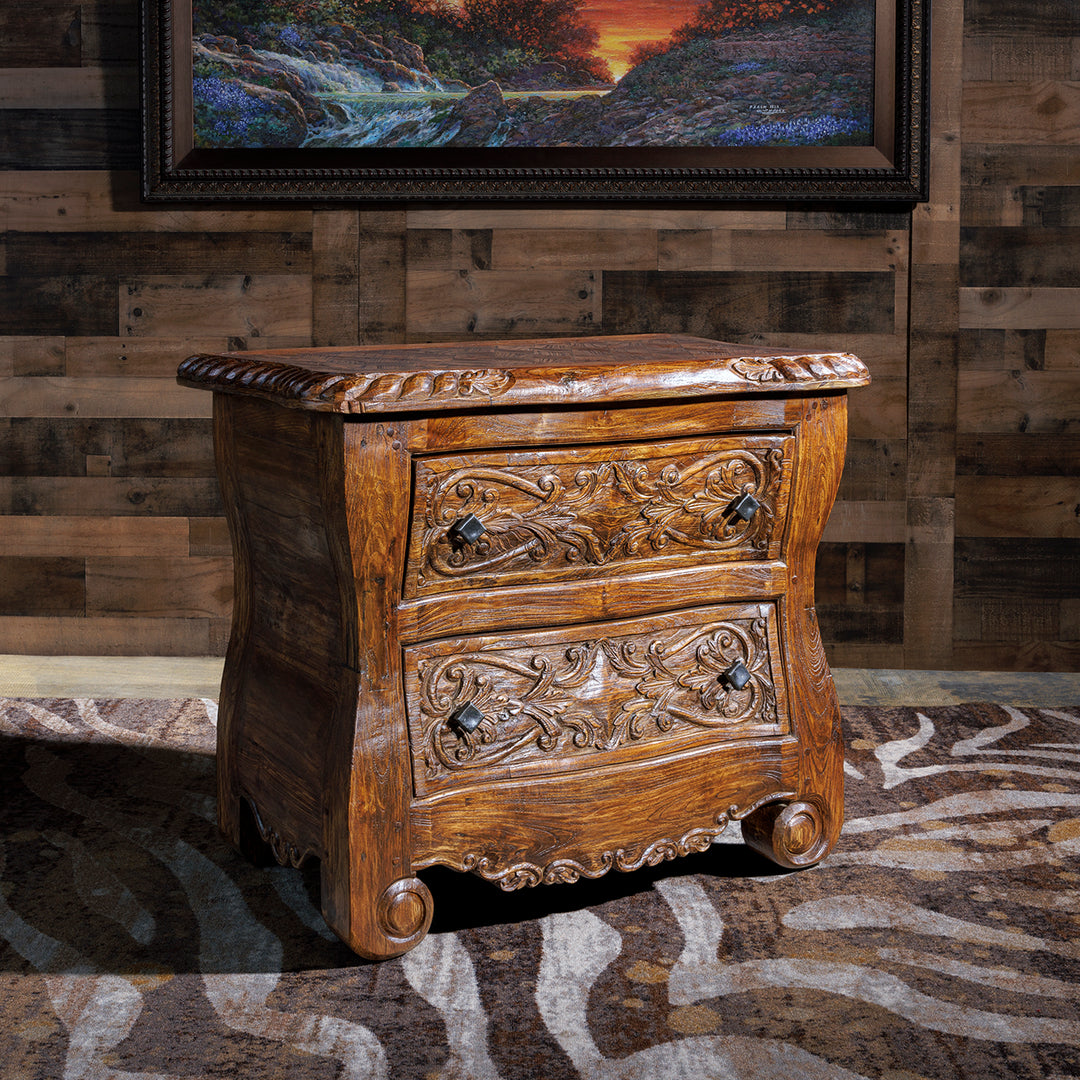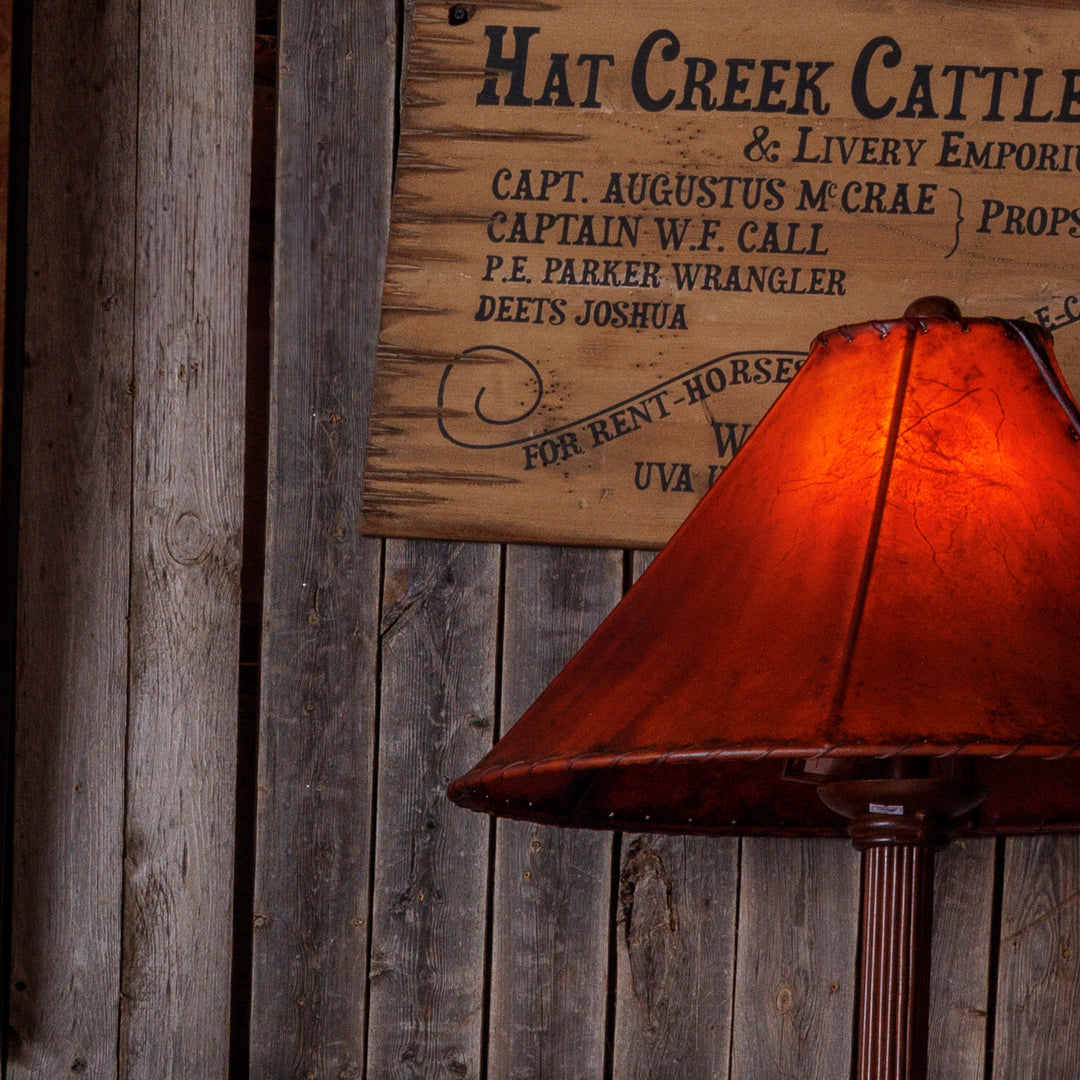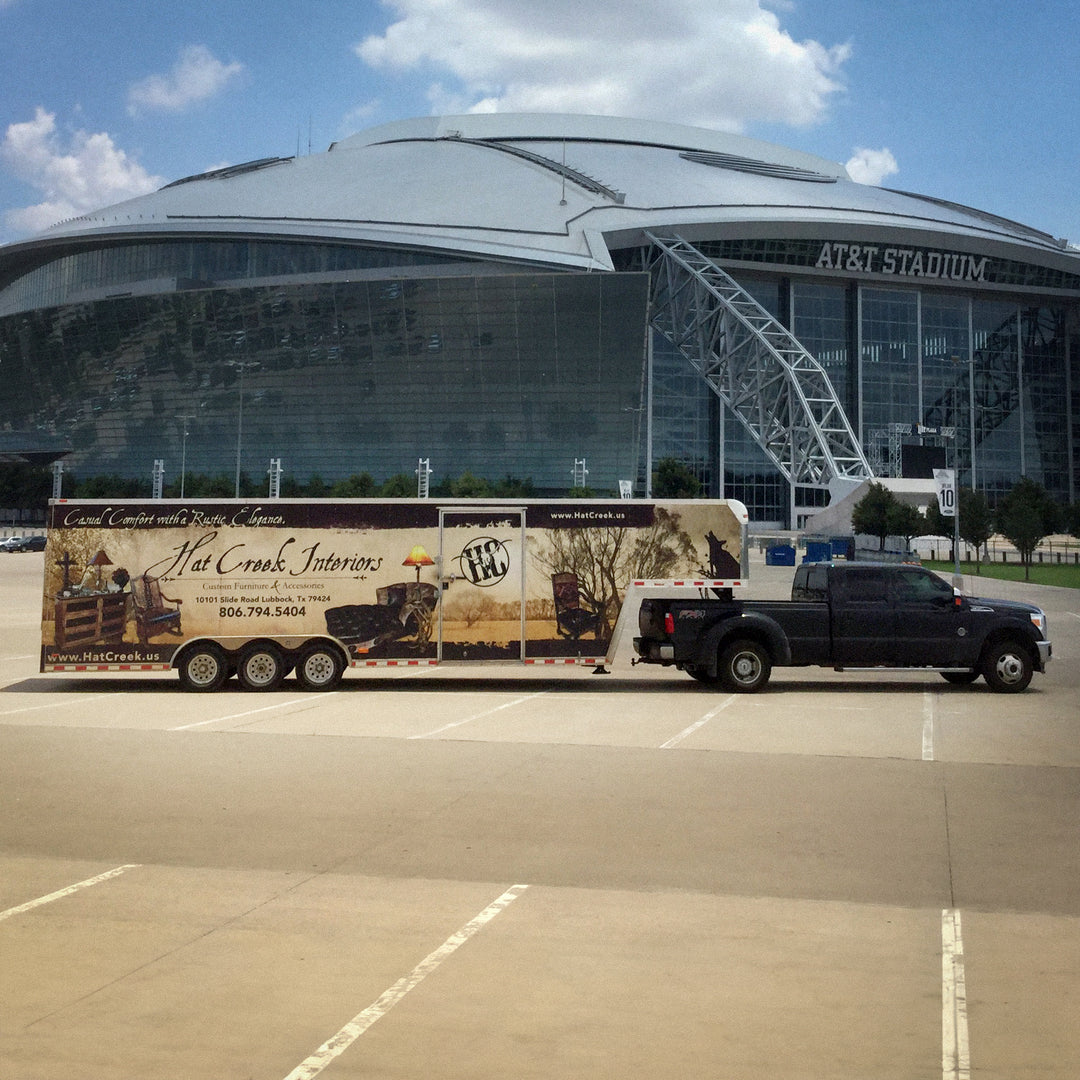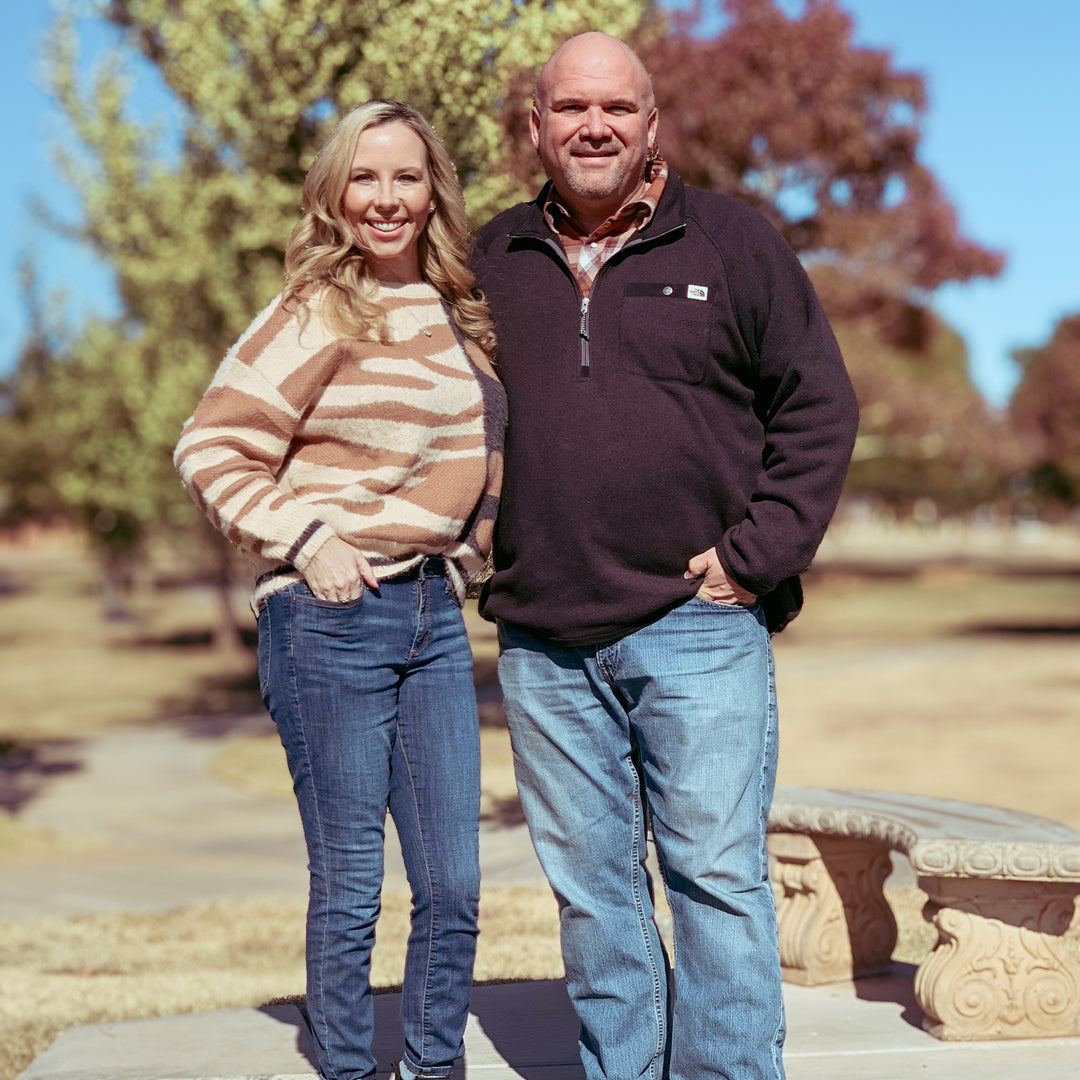Western Christmas Traditions
Western Christmas Traditions
Christmas is a time for family, friends, and celebration. But what about the traditions that make Christmas western? From decorating with western themes and sitting by the fire with your dog, to authentic western cooking, there are many ways to celebrate Christmas as our ancestors did! Hat Creek Interiors will explore some of the most popular western Christmas traditions in this blog post. We will also give you some ideas on how to incorporate these traditions into your own holiday celebrations!

Many of our modern traditions come from the past couple of centuries
...and western Christmas traditions are no different! You might be surprised by how closely the Christmas holidays of centuries past resemble our modern celebrations. Some of the things we most closely associate with Christmas today, such as carols and Santa Claus, were celebrated on the western frontier in the 19th century or earlier. So, if you're looking to add a little bit of history and tradition to your holiday celebrations this year, read on!

Carols
Carols and Christmas music have been a part of western Christmas celebrations for centuries. In the early days of the western frontier, pioneers often sang carols around the campfire on Christmas Eve. As the frontier towns grew and settlers built churches, caroling became a popular way to celebrate Christmas in public. Some of the most popular carols today, such as "Silent Night" and "Joy to the World," were first sung on the western frontier.
Famous carols
Some of the most famous carols like "Jingle Bells" and "Deck the Halls" were also first popularized in the western United States. So, if you want to add some western flair to your holiday music this year, check out some of these classic carols!

Charity
The western United States is renowned for its charitable nature, and Christmas is no exception. In 1909, Colorado madam Blanche Burton purchased a ton of coal for needy families at Christmas. Other acts of kindness have been recorded even earlier, such as during the 1880s when writer Cyrus Townsend Brady remembered sharing a meal with a low-income family who had no presents. Afterward, Brady went to the local church and filled a basket with items from his own sewing kit, his penknife, and some candy for the children at the house.

Around Christmas, many charities focused on helping the less fortunate in society. Best and Company was one such business that encouraged shoppers to buy presents for the poor from their "marked-down goods." In 1895, the San Francisco Call published a story about how a teacher asked schoolchildren to bring one potato and a stick of wood each for Christmas baskets destined for poverty-stricken families. The kind kids brought these items and delivered large quantities of canned goods and clothing.

Church
Church services were also an essential part of the Christmas tradition in the American west. Because most of the population was Christian, going to church on Christmas Eve or Christmas Day was a must. Midnight mass was also a popular tradition, and people would often dress up in their finest clothes for the occasion.
Christians in the western United States celebrated Christmas in a variety of ways, but one commonality was attending church services. As early as 1865, Father Joseph Giorda held a midnight mass in Virginia City, Montana. Families usually went to church on Christmas morning before returning home for their Christmas dinner and greeting their neighbors and friends. On the other hand, diehard church attendees spent time at church before the holiday, seeing a Christmas play or some other event.

More than simply offering religious services, churches provided succor and assistance to those who were struggling or less fortunate during the Christmas season. In 1871, for example, the Union Democrat reported that St. James' Episcopal Church in Sonora, California, would be using its Christmas tree to distribute gifts to those in need.
In 1898, the Coconino Sun from Flagstaff, Arizona, stated that entertainment would not be the only activity at the Presbyterian Church on Christmas Eve--there would also be "the usual treat for the little folks" and presents given out by members of the Sunday school. A year later, in Seattle, Washington, an entire page in the Post-Intelligencer was devoted to listing all of the different churches' holiday service times and what each one planned to do.

Decorations
One western Christmas tradition that is still popular today is the use of greenery in decorating. In the days before electric lights and store-bought decorations, people would bring evergreen branches into their homes to add a touch of green during the long winter months. This tradition is still going strong, with many people using live trees and wreaths in their homes.
The commercial Christmas decorations we find on store shelves today were quite hard to come by in the early Wild West. However, especially after "Deck the Halls" was adapted from a sixteenth-century Welsh melody in 1862, people began decorating their homes with "boughs of holly" and other goodies. The song encouraged people to adorn their properties with native flora, such as wreaths. In the west, using “evergreens, pinecones, holly, nuts, and berries” was frequent practice.

Mistletoe
Mistletoe, a plant that westerners brought over from Europe, was also used to spruce up homes during the holidays. It was often hung in doorways as part of a tradition that allowed men to kiss any woman who stood beneath it. Of course, this led to many mischievous attempts at stealing kisses! In fact, we borrow this tradition from the ancient Greeks.

Christmas tree
Americans initially saw Christmas trees as "pagan symbols" and refused to put them up, despite the fact that they first appeared in Pennsylvania in 1747. What did American pioneers hang on their Christmas trees? Decorations were mostly handmade -if there was enough wood available to cut down a tree for decoration and space to display it during Christmas.
Other decorations included dried fruit or popcorn on a string, wrapped candies, cookies, nuts, or tin and glass baubles reminiscent of today's Christmas tree ornaments. The most dangerous of these decorations? Candles that could quickly turn a tree into an inferno.

Light luminarias
The tradition of luminarias began in Mexico hundreds of years ago. People placed candles in sand-filled jars or bags to light the way for traveling pilgrims on their way to celebrate Christmas at a shrine. Today, you can find luminarias all over the American Southwest during the holiday season. So, light some luminarias on Christmas Eve to guide the way for Mary and Joseph, or set them in your windows as a sign of welcome.

Food
In some western states, eating fry bread on Christmas is traditional. This Native American dish is made of flour, water, and salt and is deep-fried to perfection. It's often served with honey or powdered sugar and makes a delicious holiday treat.
Tamale-making
Sharing tamales is another western Christmas tradition that dates back centuries. This delicious Mexican dish is made of corn dough filled with meat, vegetables, or fruit and wrapped in a corn husk or banana leaf. Westerners often serve tamales as part of a bigger feast on Christmas Eve, but they're also great for leftovers.

Games
Christmas wouldn't be complete without a little friendly competition, and western states have their own unique holiday games. In New Mexico, for example, it's traditional to play a game called "La Posada." This game is similar to hide-and-seek, and children play it on Christmas Eve.
Gifts
One western Christmas tradition that is still popular today is the giving of gifts. While the origins of this tradition are unknown, it is thought to be based on the custom of giving gifts to the poor during the winter months. This practice continued even when those living in the American west could be considered relatively poor themselves: stereotypical gifts of the time included things like wafers, candies, nuts, raisins, cake, potatoes, and gingerbread. Non-consumable presents were items such as pens, toothbrushes, and a little money and medicine.

Santa Claus
Santa Claus has long been a symbol of the western world. This jolly, bearded man is said to bring gifts to good children on Christmas Eve, typically leaving them in stockings hung by the fireplace or near the Christmas tree. Santa Claus is based on Saint Nicholas, a fourth-century Christian bishop who was known for his generosity. He came with German immigrants to the American west from German culture.

Westernize your Christmas with Hat Creek Interiors
It's never too early to start thinking about the holidays. When you consider that some of our most treasured Christmas traditions were started or preserved by western pioneers, it only makes sense to honor them during the holiday season. Hat Creek Interiors can help with that -we have a vast selection of authentic western furniture and decorations, most of which are made right here in America. Now that's a Christmas decoration you can be proud of. So come on down to Hat Creek Interiors to spread the holiday cheer!










Leave a comment